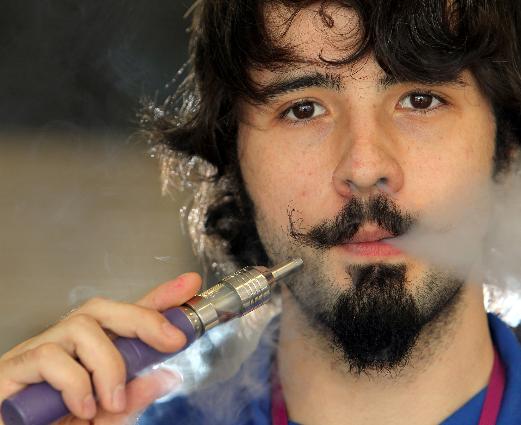Other Views: E-cigarette sellers take page from Big Tobacco’s book
— USA Today
Just when smoking has finally lost its glamour, along come electronic cigarettes and an avalanche of sexy new ads that promote “vaping.”
In one, actor Stephen Dorff, shirtless, talks about taking “back your freedom” while inhaling vapor on Lorillard’s blu eCig. (Can anyone say Marlboro Man?) In another ad for blu, former Playboy centerfold Jenny McCarthy leans forward seductively into the camera before saying: “I feel free to have one almost anywhere.”
For a product whose main appeal is supposed to be that it’s not a traditional cigarette, e-cigarette makers have sure taken a lot of pages from Big Tobacco’s playbook. Which is not surprising. Many of the sellers are the same companies that made billions of dollars addicting people to a product that kills 480,000 a year.
The marketing push is enough to trouble anyone who believed that, after a half-century battle, the nation finally had smoking on the run and that fewer teenagers would get hooked and die prematurely.
E-cigarettes — battery-operated nicotine inhalers that contain no tobacco — have the potential to help some smokers quit. But the jury is still out on whether and how well they may work. In the meantime, the potential for nicotine addiction is high, and there’s no good reason to use e-cigarettes other than trying to quit smoking.
Federal law prohibits cigarette makers from sponsoring sports and entertainment events, handing out free samples and selling certain flavored cigarettes. TV ads were banned in 1970.
But for e-cigarettes, it’s open season. Makers have sponsored music festivals, fashion shows and IndyCar racing. You can buy e-cigarettes or liquid refills in everything from Cherry Blast to Gummy Bear. Is the public really supposed to believe that e-cigarettes are not being marketed to minors?
The dangers of e-cigarettes may not be as obvious as those of traditional smokes, but new problems are emerging.
For example, the nicotine-laced liquid the devices use, which comes in small vials and large containers, can be toxic if touched or consumed. Calls to poison control centers about misuse, mostly by children, have risen to 217 a month this year, almost 10 times the number in 2011.
Also troubling is that more teenagers are experimenting with e-cigarettes. In 2012, 1.8 million middle-school and high-school students tried them, double the number the year before. One in five of the middle-schoolers who experimented said they’d never smoked before. It doesn’t help that about 20 states allow sales of e-cigarettes to minors.
So what’s the right response? At least until more studies are done, all states should treat the new devices as they treat cigarettes, with bans on youth sales and indoor use. And the Food and Drug Administration, which has been slow to assert its authority to regulate e-cigarettes, ought to get on with it.
More independent research would determine if e-cigarettes really can help smokers quit. Or if they carry other health risks. For now, the nation ought to ensure that a new generation doesn’t get hooked on a different and potentially dangerous product.
http://www.theadvertiser.com/story/opinion/2014/04/20/other-views-e-cigarette-sellers-take-page-from-big-tobaccos-book/7951623/


